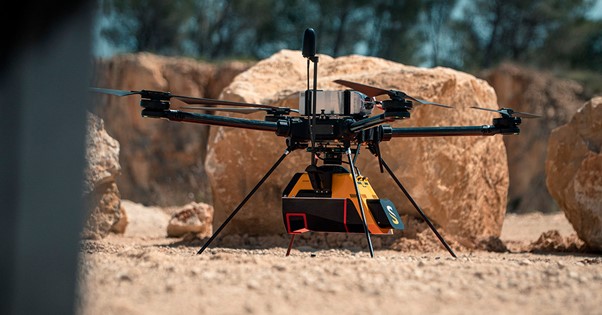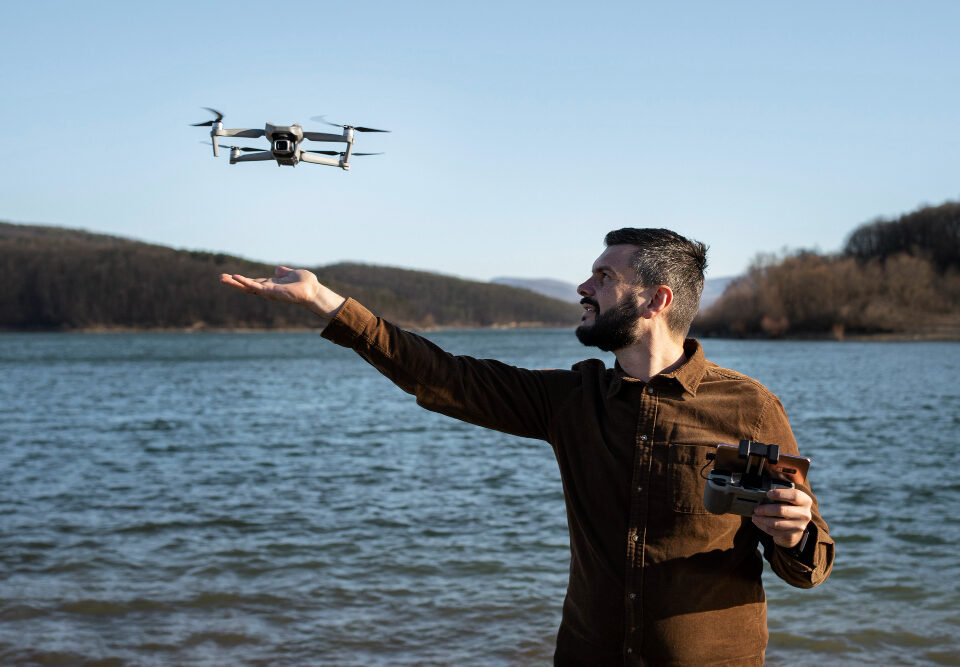Key Categories of Drone Software in Use Today
Drones have become an integral part of many industries, especially in mapping, construction, and agriculture. The software that powers these drones plays a crucial role in their application and success. Here’s an overview of two main categories of drone software—mapping and industry-specific applications—highlighting how they are driving innovation across sectors.
Drone Mapping Software: Revolutionizing Surveying
Mapping software has evolved tremendously, allowing drones to create highly detailed, accurate models and maps. Some of the top players in the drone mapping software space include:
Leading Drone Mapping Software Companies
- Pix4D: Known for offering low-cost digital mapping solutions, Pix4D has become a popular choice for professionals. It is known for its next-generation photogrammetry software, which is widely used for both drone and terrestrial mapping. Pix4D helps users integrate mapping software into workflows and offers training for skills certification, starting from USD 410.00.
Key features:- Integration of photogrammetry and LiDAR data.
- Tools for vectorizing and interpreting data.
- Survey terrain workflows for capturing and manipulating images.
- DJI Terra: This software excels at generating 2D and 3D models for surveying, construction, and inspection purposes. DJI Terra allows users to plan, capture, and analyze data in one streamlined process.
- Trendspek: Known for its cloud-based platform, Trendspek specializes in high-fidelity asset inspection and management, offering precise models that allow for virtual walkthroughs of physical assets.
- Agisoft Metashape: This software is particularly known for photogrammetry, enabling the creation of 3D models from 2D images with high accuracy.
- Bentley iTwin Capture Modeler: Bentley’s platform focuses on infrastructure projects, providing advanced capabilities for large-scale 3D reality modeling.
Applications of Drone Mapping Software
- Photogrammetry: The process of creating 3D models from photographs. With Pix4D and similar software, users can create maps and models for urban planning, infrastructure development, and environmental monitoring.
- LiDAR Integration: LiDAR-equipped drones, combined with software like Pix4D and Bentley iTwin, enable highly detailed terrain models, making them essential for construction and environmental analysis.
Drone Software in the Construction Industry
Why Construction Companies Are Turning to Drones
Drones have proven to be valuable tools in the construction industry, primarily because they offer increased productivity, reduced manpower needs, and significant cost savings. Here are some of the most impactful applications of drones in construction:
- Thermal Imaging: Drones equipped with thermal cameras can inspect building materials and structures, identifying weak points that are invisible to the naked eye.
- Photogrammetry and 3D Modeling: By using software like Pix4D and DJI Terra, construction teams can create precise 3D models of job sites, allowing for better planning and quality control.
- LiDAR Scanning: Drones with LiDAR technology can scan entire job sites to create accurate terrain models, crucial for tasks like land surveying and infrastructure planning.
Benefits of Using Drones in Construction
- Increased Productivity: Drones allow for quicker inspections and monitoring of large construction sites, which traditionally would take days or even weeks.
- Cost Savings: By reducing the need for manpower and streamlining operations, drones help companies cut costs significantly.
- Improved Safety: Drones reduce the need for human inspections in hazardous areas, thereby enhancing worker safety.
This rapid adoption of drones is a game changer for construction, with the industry projected to generate $30.9 billion in revenue over the next seven years.
The Role of Advanced Drone Licenses in Construction
To use drones in urban areas, many construction companies now require employees to hold advanced drone licenses. These licenses allow drones to operate in densely populated environments, gathering essential data on building structures, floor and wall densities, and much more.
One notable example is a national construction company in Canada that trained seven of its employees through the Canadian Drone Institute. After completing the advanced course, these employees were able to broadcast data in real-time to their Japanese client overseas, eliminating the need for costly international travel.
Drone Software in Agriculture: A Modern Farming Revolution
The Role of Drone Technology in Agriculture
Drone technology has transformed modern agriculture, helping farmers increase crop yields while reducing costs. Some key software applications in agriculture include:
- Fertility Analysis: Drones equipped with sensors can analyze soil fertility, helping farmers target areas that need improvement.
- LiDAR Technology: LiDAR is particularly useful in agriculture because it can penetrate soil surfaces and provide detailed information on what needs to be done to improve crop production.
Benefits to Farmers
- Precision Farming: Farmers can now use drone software to apply fertilizers only where needed, reducing waste and increasing efficiency.
- Monitoring Yields: Drones can compare current crop yields against projected future yields, helping farmers make more informed decisions.
A Case Study in Agricultural Drone Use
A farming company utilizing drone technology reported significant improvements in crop yields, with less reliance on fertilizers. By targeting specific areas of the farm that needed improvement, the company was able to increase overall productivity while lowering input costs.
Conclusion
The use of drones and the software that powers them is reshaping industries like construction and agriculture. By leveraging drone mapping technologies such as Pix4D, DJI Terra, and LiDAR, companies are experiencing enhanced productivity, cost savings, and operational efficiency. As more industries adopt these tools, drone software is expected to continue evolving, offering even more innovative solutions for real-world problems.
Whether you’re in construction or agriculture, investing in drone technology and software can provide a significant return on investment, driving success in the years to come.




